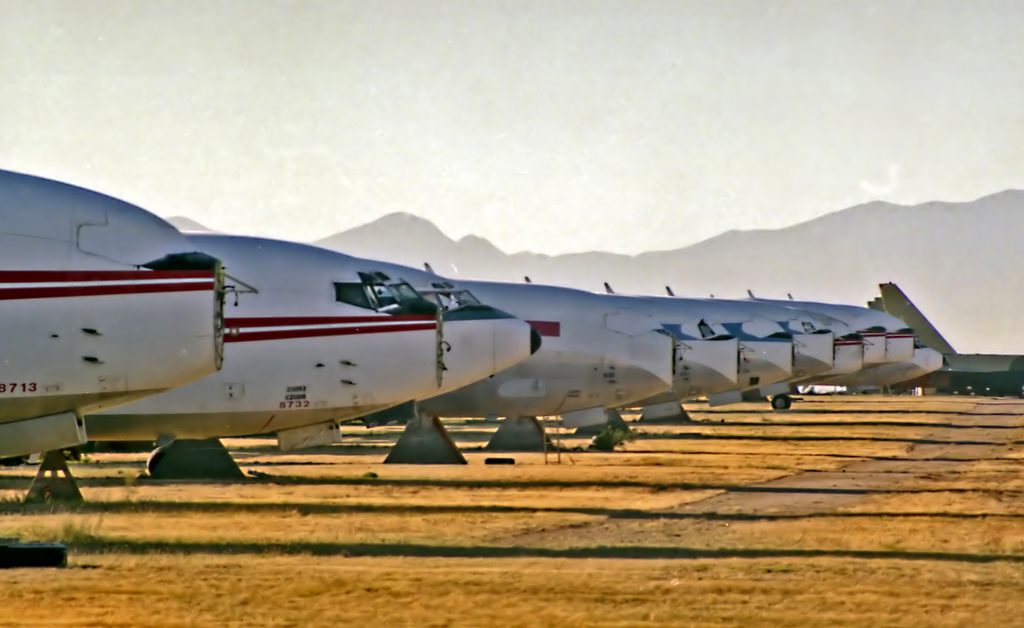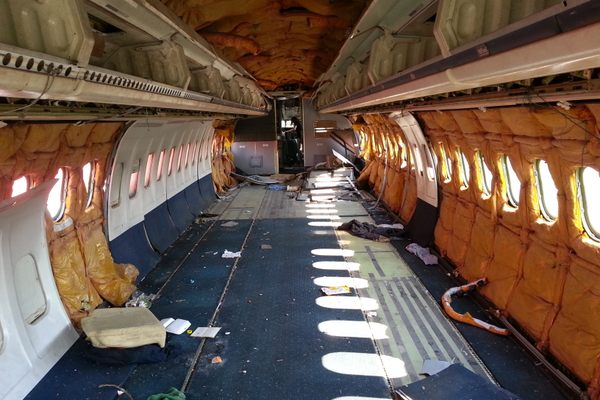Where Airplanes Go When They Die
Under the right circumstances, it’s possible to visit an aviation boneyard.

Almost 50 years after the first Boeing 747 went into service in 1970, United Airlines has retired its last models of the classic plane. When they die, airplanes don’t go to some mythical place in the sky; they go to boneyards, where they await their fate.
United’s 747s have laid down their wings at an aircraft disassembly center in Tupelo, Mississippi. As planes stay in service for longer, a market for second-hand airplane parts has grown. A facility like this one, which is owned by a Chinese company, will take out a plane’s engine and other valuable parts, then break down the plane for scrap metal and other materials. Some every day objects—computers, TVs, floor tiles—have materials in them that once flew high above the Earth.
Just a few years ago, only about 50 percent of a plane could be recycled; now, following the most up-to-date recycling standards, a facility like the one in Tupelo can find a way to re-use around 85 percent of a plane. It takes a few weeks to break down a plane, and the parking lot for doomed planes is relatively small.

Out in the American Southwest, though, and in other dry places around the world, airplane boneyards might be filled with thousands of planes. Some of these could be put back into service, especially if they’ve been parked for three years or less; the dry desert conditions helps keep them in flying shape. The largest boneyard for military aircraft, which started growing immediately after World War II, is at the Davis-Montham Air Force Base in Tucson, Arizona.
As part of its good-bye to the 747, United is offering a unique opportunity for fans to use their frequent flyer miles to buy a visit to the Tupelo recycling facility. But for those of us who haven’t proved their loyalty, it’s possible to visit the Tucson boneyard through the Pima Air & Space Museum. (You need security clearance in advance, so plan ahead.)
There are also less official boneyards around the world, where it’s possible to see aging aircraft up close. But some of the best of those have already disappeared—after airplane recycling has become bigger business, the planes became more valuable as scrap.









Follow us on Twitter to get the latest on the world's hidden wonders.
Like us on Facebook to get the latest on the world's hidden wonders.
Follow us on Twitter Like us on Facebook